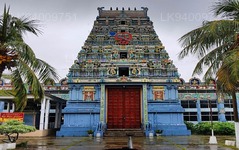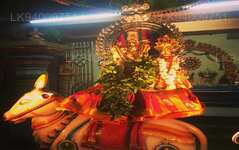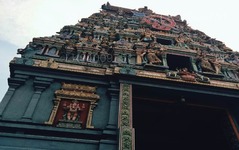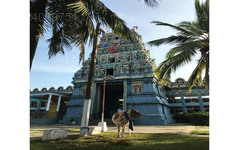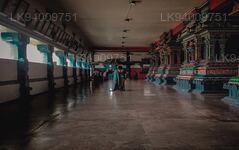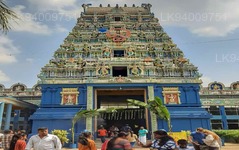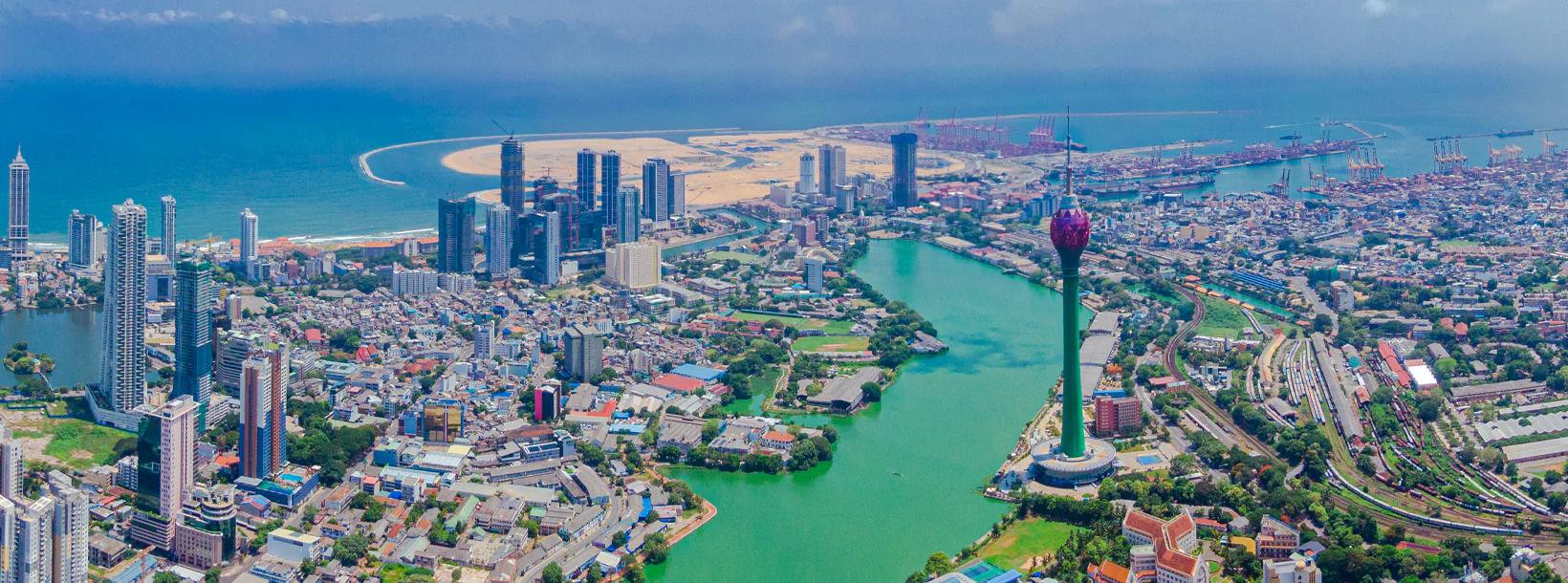
Colombo City
Colombo, the capital of Sri Lanka, is a dynamic city blending tradition and modernity. It showcases colonial architecture, lively markets, and serene Buddhist temples. With diverse cuisine, a growing skyline, and beautiful beaches, it's a vibrant hub for business, culture, and tourism, offering a gateway to explore Sri Lanka's wonders.
Old Kathiresan Temple
Old Kathiresan Temple is a massive century old Hindu cultural site hidden amongst the busy business centre of Colombo City. It is located in Colombo 4 (Bambalapitiya) a little further on from the twin Hindu Temples opposite the Bambalapitiya Apartment Complex, and is adjoining Vajira Road.
Kathiresan (Light Rayed Lord) is another name for Lord Murugan, the Hindu God of Light, Love and War. Wen the temple was initially built, Lord Murugan was considered the main deity of the temple and enshrined in the central shrine. As such it gained the name Kathiresan Temple. With the building of another Murugan Temple nearby (the one directly opposite the apartments mentioned before), which was named New Kathiresan Temple,, this one began to be called Old Kathiresan temple to differentiate it. In addition, with time the temple,s Ganesha shrine became highly popular and earned the place the name Vajira Road Pillaiyar (Ganesha) Kovil, or ‘Vijira Pilaiyar Kovil,..
While the Old Kathiresan Temple is quite old and has a long history, it remains a quiet place of peace and solace. One of the reasons for this is that it is still not as popular as the nearby temples, as the temple only opened back up recently after a very long stint of renovations. For the youth of Colombo, this temple is pretty much unknown place as it has remained under construction for over a decade.
However, now that it has opened its doors to devotees once again, the work done on the temple has been found to be amazing. A beautiful green lawn and a tall colorful temple tower welcome The new coats of paint add a touch of color to the temple,s original structure. Many new additions have been made with an impeccable eye to detail. The deities in the shrines are beautifully carved and in some shrines, where they were initially too small or crudely made, replaced with black granite statues from India done by master stone carvers.
Visiting the Temple
When visiting Hindu temples it is a custom to cleanse yourself properly and wear clean washed clothes when visiting, as they are holy places. You can also take offerings such as flowers, incense sticks, garlands, silk or satin cloth for draping the deities, etc. There are usually garland sellers near the entrance of the temple who sell many types of offerings.
Before entering the temple remove your footwear and hand it over to the person who handles this near the entrance. Wash your feet at the tap close to where your footwear is kept, to cleanse them. Also wash your offerings if they are washable (garlands or flowers), or sprinkle some fresh clean water if not.
Once you enter you will be faced with the main shrine. After giving your offerings you can buy a ticket for a pooja. They will ask for your name and astrological birth star. If you don’t know your star, you can just give your name. Then there will be a pooja and some blessed pooja objects (a banana on a betel leaf, holy ash, flowers from the pooja, etc) will be given to you to take home.
You can then move clockwise around the rest of the temple looking at the other shrines, such as the Ganesha and Shiva shrines. You can also request to do poojas at the other shrines with purchased tickets from the counter inside if you wish. Towards the back you will come to a shrine with some recent Indian saints: Sai Baba and Shirti Sai Baba. If you are a believer in these saints, you may enjoy a visit here.
There are also some cows and roosters at the temple. The cows are used to provide milk for the poojas, while the roosters are kept because they have special significance to the main deity of the temple Murugan. According to legend, Lord Murugan battled an evil demon to save the people of heaven and earth. During the battle the demon attempted to escape by hiding in the form of a mango tree. But it was discovered, and Murugan split the demon into two with his spear. One of the split parts turned into a peacock, and the other a rooster. The peacock became Murugan,s vehicle for travel, while the colorful rooster became his flag. Hence, this Murugan temple – like many others – has roosters walking around with great aplomb.
There is much to see and enjoy at this temple. It makes for a pleasant space of worship and solace in a city of bustling tradespeople and workers.
About Colombo District
Colombo is the largest city and commercial capital of Sri Lanka. It is located on the west coast of the island and adjacent to Sri Jayewardenepura Kotte, the capital city of Sri Lanka. Colombo is a busy and vibrant city with a mixture of modern life and colonial buildings and ruins and a city population of 647,100.The Colombo Metropolitan Region, defined by the districts of Colombo, Gampaha and Kalutara, has an estimated population of 5,648,000, and covers an area of 3,694.20 km²
Colombo is a multi-ethnic, multi-cultural city. It is the most populous city in Sri Lanka, with 642,163 people living within the city limits. The population of Colombo is a mix of numerous ethnic groups, mainly Sinhalese, Moors and Tamils. There are also small communities of people with Chinese, Portuguese, Dutch, Malay and Indian origins living in the city, as well as numerous European expatriates.
The great majority of Sri Lankan corporations have their head offices in Colombo. Some of the industries include chemicals, textiles, glass, cement, leather goods, furniture, and jewellery. In the city center is located South Asia's second tallest building - The World Trade Centre.
About Western Province
The Western Province is the most densely populated province of Sri Lanka. It is home to the legislative capital Sri Jayawardenepura Kotte as well to Colombo, the nation's administrative and business center. Western Province is divided into 3 main districts called Colombo (642 km²), Gampaha (1,386.6 km²) and Kalutara (1,606 km²) districts. As Sri Lanka's economic hub, all the major local and international corporations have their presence in the city and so do all the major designer and high street retailers, so be ready to indulge in some retail therapy in western province.
Having the highest population in the all the provinces, the almost all the premier educational institutions in the island are located in western province. Universities in the province include the University of Colombo, the University of Sri Jayewardenepura, University of Kelaniya, Open University, Sri Lanka, Buddhist and Pali University of Sri Lanka, General Sir John Kotelawala Defence University and University of Moratuwa .Western province has the largest amount of schools in the country, which includes National, Provincial, Private and International schools.

